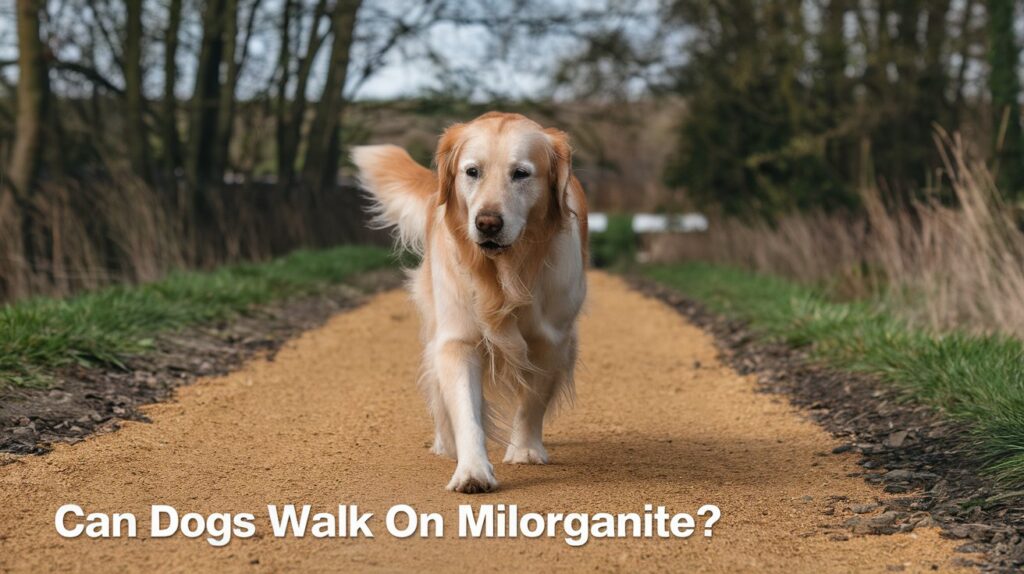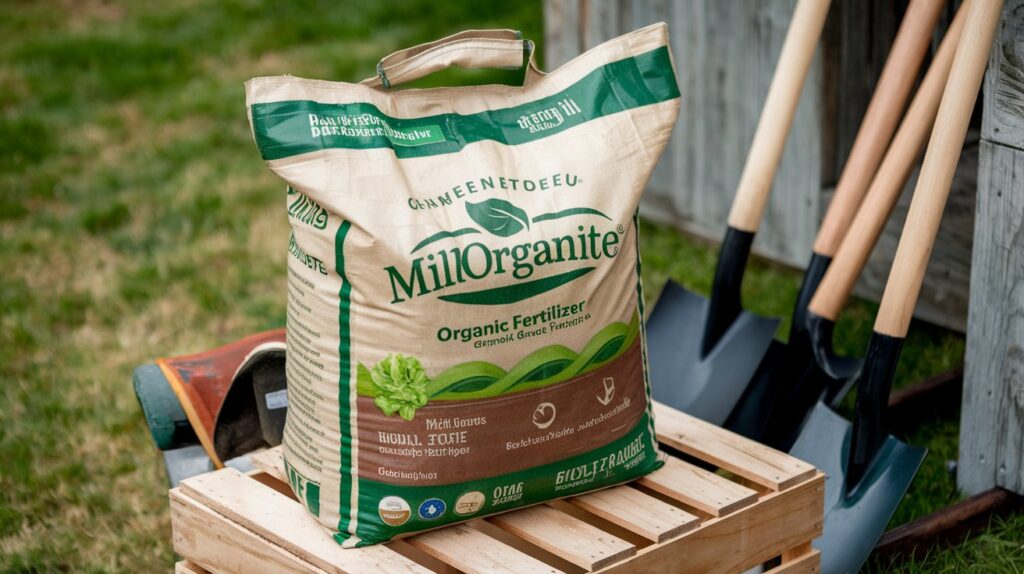
Can Dogs Walk on Milorganite?
Dogs can walk on Milorganite-treated lawns, but taking precautions is important. Milorganite is generally considered safe for pets once it has been watered in and allowed to dry. However, there is still a risk if dogs lick their paws or fur after walking on a freshly treated lawn, as it can cause mild digestive issues like vomiting or diarrhea.
To ensure your dog’s safety, it’s recommended that you keep your dog off the lawn for 24-48 hours after application and monitor it for any signs of discomfort or illness.
What is Milorganite and Why is it Used?
Is Milorganite Safe for Dogs?
1. Ingredients in Milorganites and Their Impact on Pets
The ingredients in Milorganite are not inherently toxic to dogs, but that doesn’t mean there are no risks. Milorganite contains:
- Heat-dried microbes: While these microbes are not harmful, they can cause gastrointestinal upset in dogs if ingested in large quantities.
- Iron and Nitrogen: These elements are beneficial for plant growth but can cause mild to moderate digestive issues in dogs if consumed.
2. Potential Risks of Dogs Walking on Milorganite
When Milorganite is applied to lawns, it’s in a granular form that can be easily picked up by a dog’s paws. While walking on Milorganite itself is not likely to cause serious health issues, there are a few potential risks to consider:
- Ingestion: Dogs often lick their paws after being outside. If they’ve walked on a freshly treated lawn, they may ingest small amounts of Milorganite, which could lead to vomiting, diarrhea, or more serious gastrointestinal problems.
- Respiratory Issues: In rare cases, inhaling Milorganite dust while playing or digging in a treated lawn can cause mild respiratory irritation, particularly in dogs with pre-existing conditions like asthma.
- Skin Sensitivity: Some dogs may have sensitive skin that could react to the fertilizer, causing minor itching or irritation.
3. Is Milorganite Poisonous to Dogs?
According to the ASPCA, Milorganite is not listed as a poisonous substance for dogs. However, it’s still categorized as an “irritant,” meaning it can cause mild digestive upset if ingested. While Milorganite is unlikely to cause severe poisoning, large quantities consumed can lead to more significant health concerns, such as iron toxicity. Symptoms of iron toxicity include:
- Lethargy
- Vomiting
- Diarrhea
- Loss of appetite
- Abdominal pain
If your dog shows any of these symptoms after potential exposure to Milorganite, contact your veterinarian immediately.

Precautions to Take When Using Milorganite
If you want to maintain a healthy lawn and keep your dog safe, follow these precautions when applying Milorganite:
- Keep Dogs Off the Lawn for 24-48 Hours After Application: After spreading Milorganite, it’s best to water the lawn thoroughly to help the fertilizer settle into the soil. Keep your dog off the treated area for at least 24-48 hours to prevent ingestion or skin contact.
- Store Milorganite in a Safe Place: Store any unused fertilizer in a secure location out of your pet’s reach. Dogs are curious and may try to chew on the packaging.
- Use Pet-Safe Lawn Care Practices: Consider creating a designated area in your yard where your dog can play safely, away from freshly fertilized zones.
- Monitor Your Dog After Lawn Time: If your dog has been on a lawn recently treated with Milorganite, monitor it for any signs of discomfort, such as vomiting, lethargy, or abnormal behavior.
What to Do If Your Dog Walks on or Ingests Milorganite
If your dog has walked on or ingested Milorganite, it’s important to remain calm and assess the situation. Here’s what you can do:
- Rinse Your Dog’s Paws and Fur: Use lukewarm water to thoroughly rinse your dog’s paws and any other areas that may have come into contact with the fertilizer. This will help reduce the risk of ingestion when they groom themselves.
- Offer Water and Monitor Symptoms: Provide fresh water and keep an eye out for symptoms like vomiting, diarrhea, or unusual behavior. Most mild cases will resolve on their own without medical intervention.
- Contact Your Veterinarian: If your dog shows signs of distress or has ingested a large amount of Milorganite, contact your vet immediately for advice.
Alternatives to Using Milorganite in Pet-Friendly Lawns
If you’re concerned about your dog’s exposure to Milorganite or any other fertilizer, consider these pet-safe alternatives:
- Composted Manure: This organic option enriches the soil without posing a risk to pets.
- Bone Meal or Blood Meal: These fertilizers are natural and safe, but make sure to use them sparingly, as some dogs are attracted to the smell.
- Seaweed-Based Fertilizers: These fertilizers are effective for plant growth and safe for pets.
Final Thoughts: Can Dogs Walk on Milorganite?
While Milorganite is not considered highly toxic to dogs, it’s important to take the necessary precautions to minimize any potential risks. Allowing dogs to walk on Milorganite-treated lawns is generally safe once the fertilizer has been watered in and dried. However, always monitor your dog’s behavior and take immediate action if they show any signs of discomfort or illness.
For dog owners who prioritize their pet’s safety, consider alternative fertilizers that pose fewer risks. As always, consult your veterinarian if you have any concerns about your dog’s health after exposure to any lawn care product.
FAQs: Can Dogs Walk on Milorganite?
- Is Milorganite safe around dogs? Milorganite is generally safe around dogs once it has been watered in and dried, but ingestion can cause mild digestive issues.
- Is fertilizer safe for dogs to walk on? It depends on the type of fertilizer. Most are safe after they’ve been watered and dried, but some can be harmful if ingested or touched while still fresh.
- Can dogs touch fertilizer? Dogs can touch fertilizer, but it’s best to limit contact until it’s been absorbed into the soil to prevent potential skin irritation or ingestion.
- How long does Milorganite last? Milorganite can last up to 10 weeks in the soil, providing nutrients to plants during this period.

Leave a Reply